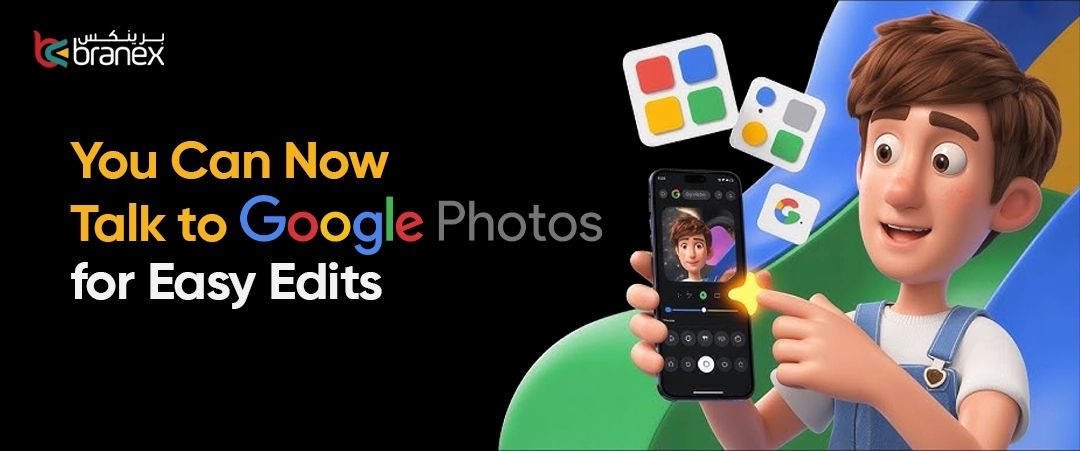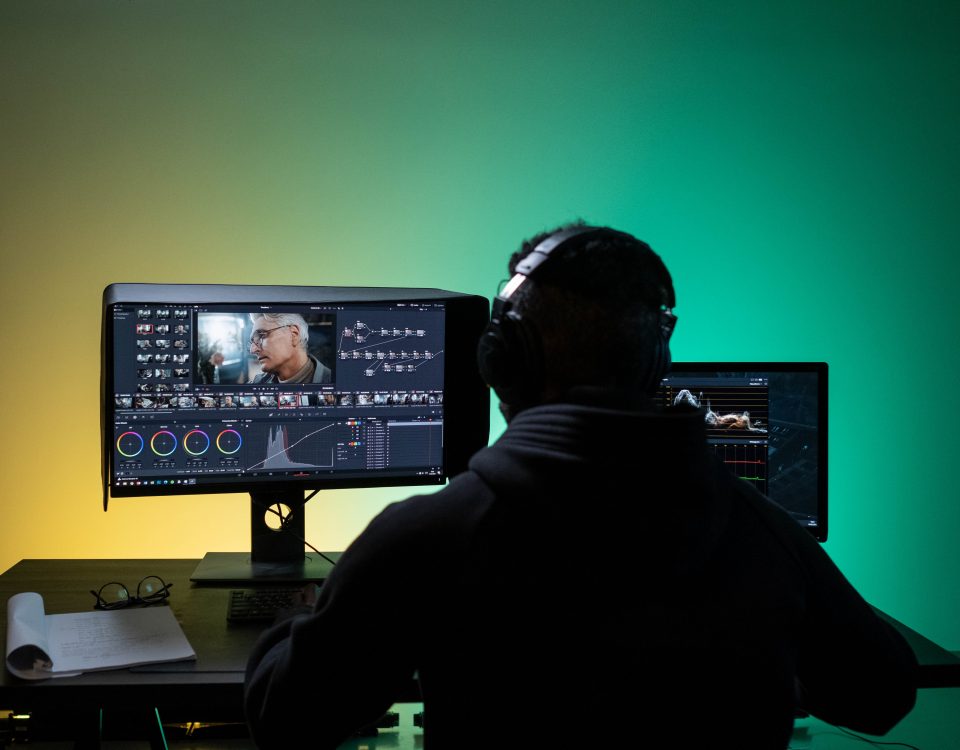Talk to Your Photos – Google’s New “Edit by Asking” and Why It Matters

Made by Google, a Google event just took place where the platform rolled out new features for Google Photos. It has changed how photo editing was done back in the days to a more modern solution; you can now provide commands to your photos in Google Photos and make changes in real-time like you are having an everyday conversation with someone. While traditional editing required people to tap on sliders or use robust editing tools to make adjustments, you can now literally tell Google Photos what you want, and it will make the changes for you.
Google isn’t just launching this upgrade as a cool trick, it’s a part of something bigger; it’s one of Google’s approaches to AI-powered convenience digital transparency.
Table of Contents
1. “Edit by Asking” — Photo Editing Made Conversational
The feature that really stands out is the “edit by asking,” feature, a new Gemini AI-powered capability which makes photo editing as easy as sending a text message. Now, users don’t have to scroll around menus; they can simply type in or speak their request directly to the photo editing tool and voila.
For example, you can give prompts like:
- “Remove the background.”
- “Make it look retro.”
- “Brighten the lighting.”
- Or even something vague like “make it better.”
Google Photos will interpret the request and apply edits instantly. Let’s say, you’re not quite sure what tweaks you need to make, the app will automatically provide suggestions for follow-up improvements, creating a back-and-forth workflow enabling AI to work alongside you as a personal editor.
The feature is smart enough to handle both basic corrections (fixing shadows, balancing exposure, cleaning up messy backgrounds) and creative touches (adding artistic vibes, changing colors, or inserting fun elements).
If you’re someone who is always running short on time, or you don’t have the know-how, this feature will lower the barriers to effective photo editing.
You can be a parent, yet edit school pictures for your child. Maybe as a small business owner, you can make tweaks to product shots or even as a casual user, you can have professional level editing done without accessing Photoshop.
2. Pixel 10: The Launchpad for AI Editing
At the moment, “edit by asking” is launching exclusively for Pixel 10 devices in the United States. For now, Google appears to stand a step ahead against Apple & Samsung by launching this specific feature for its flagship smartphone.
Google is also facing a pressing problem: Winning their customer’s trust. We are living in a world where AI-edited images can easily spread misinformation.
People are more interested in knowing what’s real.
And that’s where C2PA Content Credentials come in.
3. C2PA Content Credentials — Built-In Transparency
C2PA (Coalition for Content Provenance and Authenticity) is an open standard designed to show how an image was created and whether AI was involved.
With the launch of Pixel 10, Google is the first smartphone maker which embeds this feature directly within its Camera app. And here’s how it functions:
- Every photo taken on a Pixel 10 carries metadata showing whether it’s original, lightly edited, or AI-generated.
- This “digital signature” follows the photo wherever it goes—so even if you share it online, people can check how it was made.
- The information shows up in Google Photos under “How this was made,” giving anyone an instant view of a photo’s history.
Even if a certain set of images are untouched (like non-AI images), they will also include the following credentials leading to complete transparency.
It’s a huge step in the fight against deepfakes and manipulated media.
AI keeps getting powerful every month. Google is now positioning Pixel not just as a smart camera, but also as an ethical camera.
4. Why This Matters — Beyond Just Cool Features
Why does this combination of conversational editing and embedded transparency matter?
- Accessibility: Editing is no longer reserved for design pros. Anyone can say what they want and get results. It democratizes creativity.
- Trust in media: With C2PA, the spread of fake images becomes easier to track and harder to fake. It creates accountability in an AI-driven internet.
- Competitive edge: Apple and Samsung are both leaning on AI for their next-gen devices, but Google is planting a clear flag: AI isn’t just for gimmicks—it’s for usability and integrity.
- Content speed: Influencers, marketers, and brands can produce high-quality visuals faster, without complex tools. That’s a serious time-saver in content-driven industries.
5. Extra AI Goodies in Pixel 10
Google didn’t stop at “edit by asking.”
The Pixel 10 series is stacked with AI-first features:
- Camera Coach: A real-time AI assistant that guides you while shooting, suggesting better angles, lighting fixes, and framing tricks.
- Pro Res Zoom: Up to 100x zoom on Pro models, with Gemini generating extra detail for far-away shots (though it won’t artificially change faces or bodies).
- On-device AI: Many edits happen locally on the phone, meaning faster performance and more privacy.
Together, these features frame Pixel 10 as the most AI-centric phone Google has ever made.
6. Looking Ahead – From Pixels to Everyone
While Pixel 10 owners get first dibs, Google confirmed that C2PA support and edit-by-asking will expand to more Android phones—and even iOS—later on. That means millions of users worldwide could soon be able to edit by voice and verify photo authenticity with a tap.
As more companies adopt the C2PA standard, this could evolve into a new norm for digital content: a world where every photo has a transparent history attached. Imagine scrolling Instagram or reading news online, and being able to instantly check if an image was altered.
Conclusion – Editing Gets Easy, But Staying Real Gets Easier
Google’s latest updates turn Google Photos into both an artist and a truth-teller. On one hand, “edit by asking” makes photo editing as easy as saying a sentence—no skills required. Besides, C2PA credentials bring a much-needed layer of trust in an era of AI skepticism. For creators, this means less time tweaking and more time sharing. For everyday users, it means photos that look better without the learning curve. And for everyone, it means knowing what’s real when AI edits are everywhere. It’s not just Google showing off flashy AI—it’s Google saying: the future of photography should be both simple and honest.
And with Pixel 10 leading the charge, the question isn’t if these tools will shape how we capture and edit—it’s when the rest of the industry catches up.






 +971 4 2417179
+971 4 2417179 +971 52 181 0546
+971 52 181 0546 info@branex.ae
info@branex.ae



